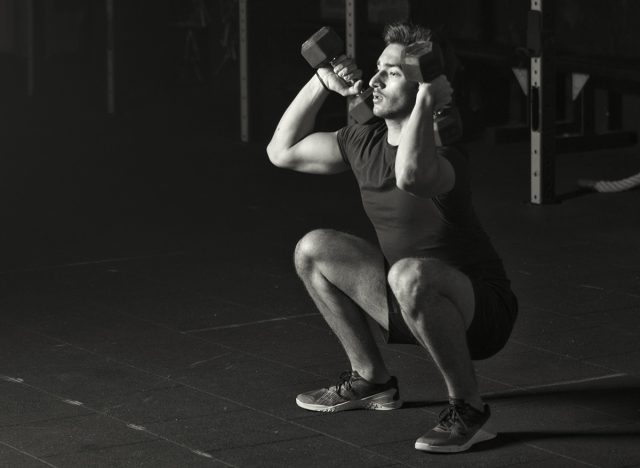Kelsea Ballerini’s Exercise Helps Slim Down a Thick Waistline – Kelsea Ballerini, the country singer, makes it a priority to do something locally in the cities she tours in and enjoys walking around to explore and get exercise–but when she’s unable to do so, she’ll hit the gym. In a recent Instagram post, the country singer gave a glimpse of a move she does while she’s on the road–the thruster, a full-body exercise that can build overall strength, tone muscle, and improve flexibility. The highly effective exercise targets multiple major muscle groups, including the legs (quadriceps, hamstrings), glutes, core, and shoulders. It also enhances cardiovascular endurance due to its dynamic nature. Here’s everything to know about thrusters and why it’s a great workout, according to USAW National Coach Jarrod Nobbe.

A thruster is a great exercise for full-body training. “This movement combines a squat with a push press, developing strength and power in the lower and upper body,” Nobbe explains. “If you aren’t quite ready to perform the thruster, there are a few progressions to the movement. Typically, I test a client or athlete for adequate squat and pressing mechanics before introducing the movement. We want to make sure there are not any contraindications.”

Thrusters are very effective with good timing and precision. “The thruster is a movement that requires precise timing, transitioning from the squat to the push press to create a fluid, singular movement,” Nobbe says. “We will begin with a squat, stand up strong, braced, and balanced, and then move straight into an overhead press. As those two movements progress, I will begin speeding up the transition from squat to press. Usually, the sequencing timing will occur naturally once enough repetitions have been performed!”
Don’t miss: 5 Best Bodyweight Exercises for Faster Weight Loss After 50

Good form and technique are key when doing thrusters and Nobbe offers the following suggestions:
- “Begin by properly racking the weight in the correct position (based on the equipment being used)
- Brace the core, balance the foot (whole foot the whole time, tripod foot), and descend into a squat with control
- Staying stacked and braced, drive the legs through the floor, accelerating from the bottom squat position.
- Using the vertical momentum from the squat, drive tall and straight with the legs
- Finish the movement by pushing the weights straight to the ceiling, ending in a great locked-out overhead position.
- Lower the weight back to the starting position with control.”

Thrusters are a versatile movement when programmed in an exercise regiment. “They may be used at the beginning of a workout for strength and power development, and they may also be used for conditioning, as this full-body movement is sneaky tough when performed for volume or time,” Nobbe tells us. “Thrusters allow you to explore the weight room, as you could use a single dumbbell, two dumbbells in a front rack position, endless kettlebell or barbell variations, and even other tools such as sandbags and bands.”

Thrusters can be a challenge to master, but there are several modifications to try. Nobbe says, “If the training goal is power, use lighter weights and keep the reps below five, focusing on driving up strong and finding speed in the squat to push press motion.” He adds, “For strength, I love using rep ranges from five to eight. If we want to increase our work capacity, I love AMRAPS, circuits, and intervals where the rep ranges get to be ten or more.”










